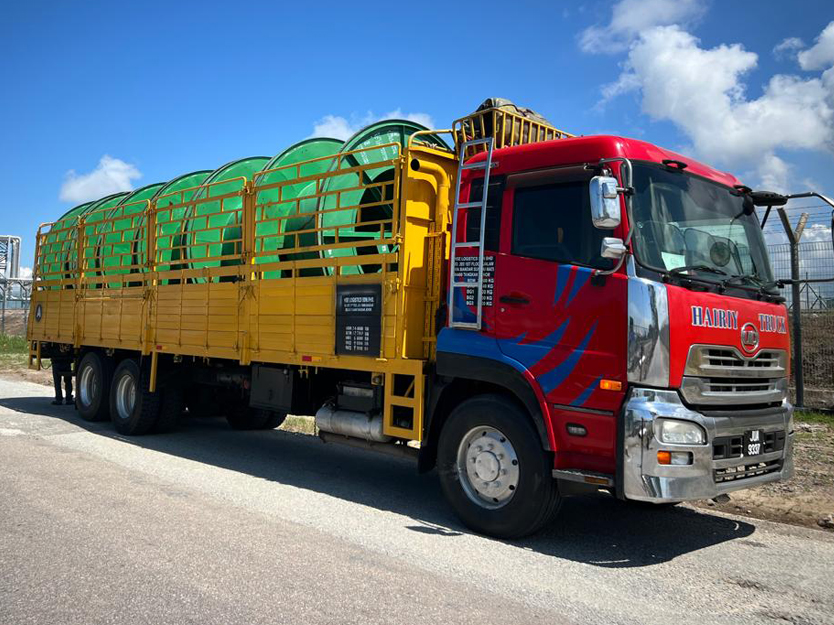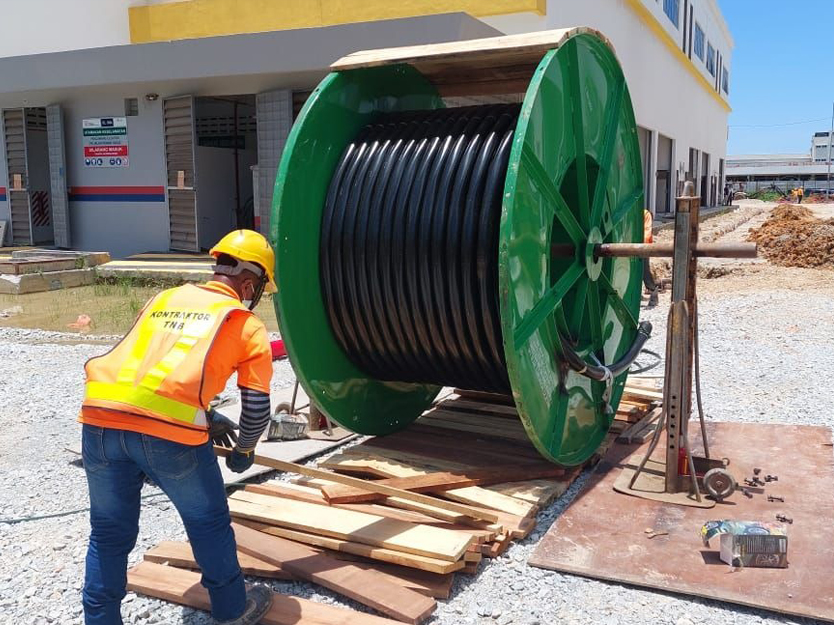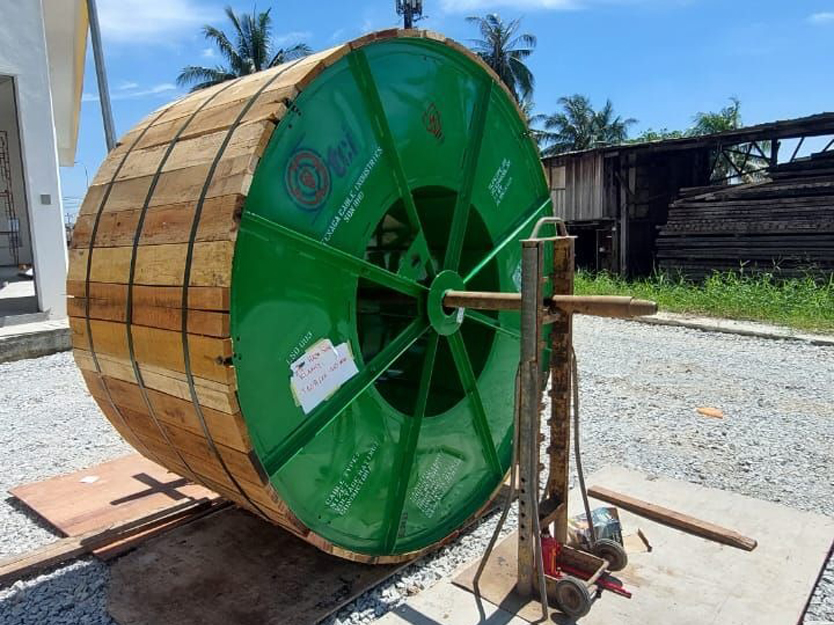As part of its ongoing efforts to enhance operational sustainability, Tenaga Nasional Berhad (TNB) has taken a closer look at how cables - a vital asset in power transmission and distribution - are managed throughout their lifecycle.
From production and transport to installation and reuse, every stage presents opportunities to reduce waste, optimise resources, and lessen environmental impact. By rethinking long-standing practices, TNB aims to make cable management not just efficient, but also environmentally responsible.
As part of TNB's transition toward a circular economy, our cable operations are being reimagined to close the loop entirely: turning end-of-life materials into valuable resources and shifting from a take-make-dispose model to a sustainable circular system.
Driven by the subsidiary of TNB, Tenaga Cable Industries Sdn. Bhd. (TCI), two key innovations have emerged from this effort - the Green Drum and the Green Cable initiative. The Green Drum replaces conventional wooden drums with a reusable steel alternative, eliminating the need for timber-based packaging and reducing waste generation. Meanwhile, the Green Cable initiative gives new life to shorter, leftover cable pieces by reproduce them into usable lengths - ensuring that valuable materials are not discarded unnecessarily.

How Steel Drums Can Save Forests
For decades, cables have been transported to project sites across Malaysia using large wooden drums or also known as reels. These drums have played a crucial role in the nation’s industrial growth - from the early years of Independence to Malaysia’s rise as a modern, fast-developing economy - serving the utility, industrial, and telecommunications sectors.
Typically made from mixed hardwood or softwood, these drums can carry tonnes of cable. However, the sustainability of this practice is increasingly being called into question. The reason is simple; these drums rely on timber - a vital resource in global efforts to combat climate change.
It is estimated that around 5,000 trees are felled to produce 14,000 wooden drums, which often have short lifespans when exposed to the sun and rain. Timber shortages have further compounded the issue, driving up prices by nearly 50% towards the end of 2021 and creating potential risks for cable supply and ultimately, power delivery.
Although long depended upon by many sectors, wooden drums are unsustainable. They typically last only six months when exposed to outdoor conditions, with vast amounts of lumber needed to make the thousands required for TNB operations. The situation was further aggravated during Malaysia’s COVID-19 Movement Control Order (MCO), when production challenges disrupted the supply of wooden drums, exposing vulnerabilities in sourcing and logistics.
In line with Malaysia’s commitment to maintain at least 50% forest cover and achieve net-zero emissions by 2050, TNB reevaluates this practice to reduce its environmental footprint and support a more sustainable cable management system.
To reduce pressure on the environment while maintaining cable deliveries, TNB came up with the Green Drum: a more durable, efficient, and sustainable alternative to traditional wooden drums.
There are two types of light steel drums at the moment, capable of carrying either the 11kV or 33kV cables. These drums are lighter than their wooden counterparts - weighing just 250kg and 300kg respectively (compared to 400kg and 500kg for wood).
The steel drums can also last much longer, each with a lifespan of five to 10 years each, and they are fitted with a GPS tracker to monitor real-time location and cable information, helping improve logistics and prevent theft.
Giving New Life to Short Length Cables
Launched in 2021, the Green Cable initiative is a move to turn unused and leftover cables into fully functioning cables refurbished or made from reclaimed materials.
Under the approved pilot project, 8.5 km of 33kV 630mm²cables comprising 44 loose coils and 20 drums, were retrieved from the Kempas store, Johor Bahru, in May 2025 for processing at TCI’s manufacturing facility.
At the facility, the cables were stripped and separated according to their material. Under close supervision from TNB’s Subject Matter Experts (SMEs), the metal components were repurposed to form new cable cores and then rigorously tested to ensure they met technical standards.
These new refurbished cables were then deployed to project sites such as Malim Jaya in Melaka. The process not only helps divert materials from landfills but also reduces production costs by up to 40% compared to manufacturing new cables.



ESG Doesn't Have to be Hard
Putting ESG concepts into practice doesn’t always require expensive infrastructure or revolutionary concepts. Sometimes, the best solutions come from reusing what already exists.
In the same way people reuse plastic bags or containers in their daily lives, large organisations can adopt similar principles of reducing, recycling and reusing.
Initiatives such as the Green Drum and Green Cable demonstrate how practical, innovative thinking can lead to meaningful environmental impact.
These initiatives align with our Reimagining TNB 2.0 (RT2.0) strategy and directly support SDG 12 (Responsible Consumption and Production) and SDG 13 (Climate Action), while contributing to the broader national agenda under Malaysia’s National Energy Transition Roadmap (NETR) and New Industrial Master Plan 2030 (NIMP 2030) sustainability goals.
With innovative evaluation and quick adoption of novel concepts such as the above, even small operational changes can generate lasting benefits for both the environment and the nation.